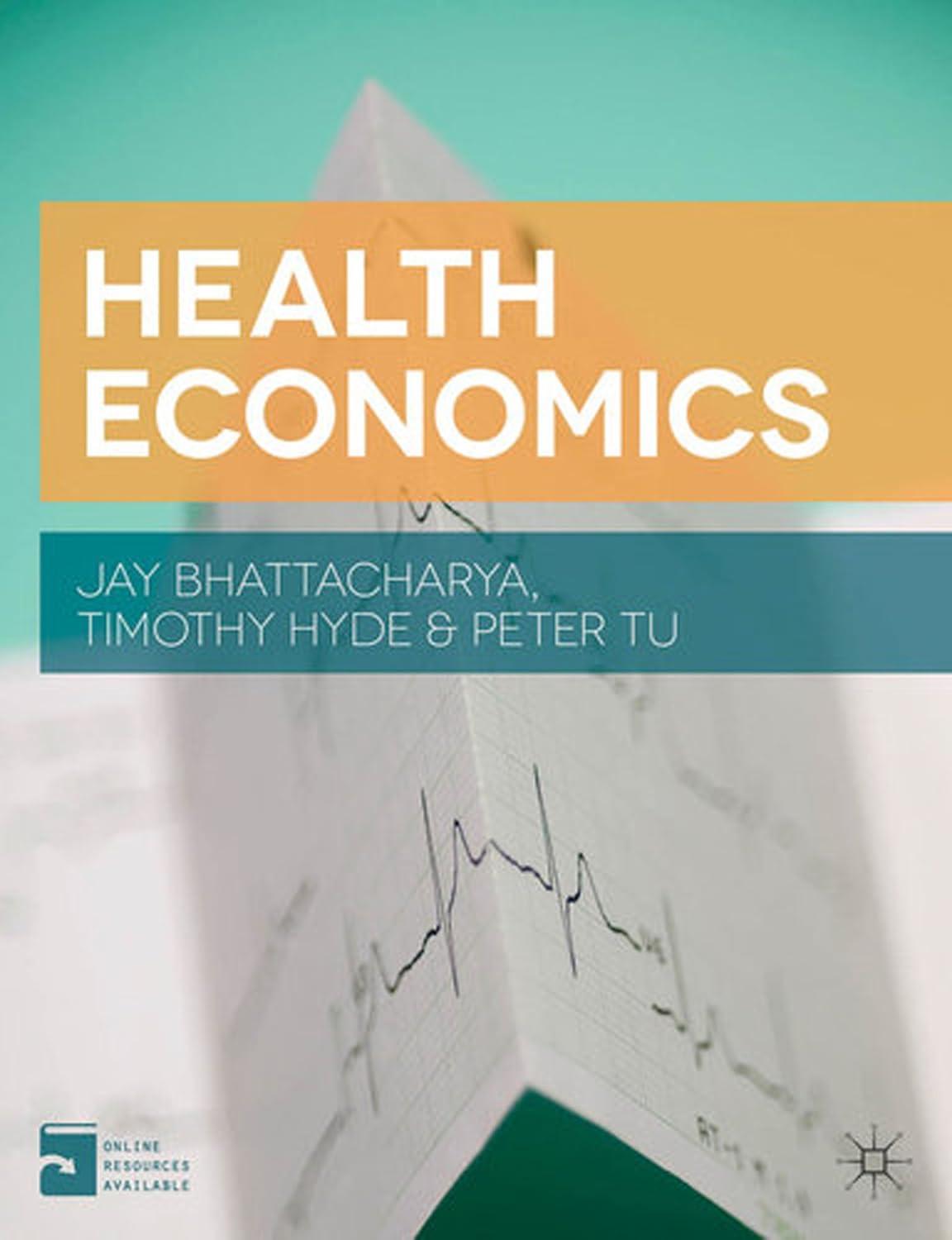A simple future elderly model. In this exercise, you will create a very simple version of the
Question:
A simple future elderly model. In this exercise, you will create a very simple version of the FEM designed at RAND. Our model will follow a cohort of 65-year-olds as they age, and each period of the model will represent one year. In the first version of our model, the elderly will have three states: h (healthy), s (sick with cancer), and r (deceased). In a given period, each elderly person assumes a certain state for the entire period. Between periods, the elderly transition with the following likelihoods:
(1) Healthy to deceased: P(rt+1|ht)=δ
(2) Healthy to sick: P(st+1|ht)=ρ(1−δ)
(3) Sick to deceased: P(rt+1 |st)=δ +γ (1−δ) where, for instance, condition 1 implies that a person has a δ chance of becoming deceased in period t +1, given that she is healthy in period t.
a. In this model, cancer patients never get cured; that is, they never return to state h once they enter states. $3 Express this idea in terms of a conditional probability statement like the ones listed above.
b. Create a diagram with circles representing each possible state and arrows between them with transition probabilities. Note that the sum of probability emanating from each state must equal one. [Hint: Some or all of the states may have self-directed arrows.]
c. In each period, the elderly incur certain health care costs. Assume ch = $ 100 (that is, assume the healthy incur $ 100 each period). Also assume cs = $ 500 and cr = $0.
Howmuch will a cohort of 1, 000 healthy 65-year-olds cost during the zeroth period of the model (when they are all still healthy)? How much would you expect they will cost altogether during the first period of the model (on average)? Express your answers in terms of ch, cs, cr, δ, ρ, and γ .
d. Imagine that you follow a cohort of simulated healthy 65-year-olds until they are all deceased (in the next exercise you will no longer have to imagine this – you will model it). Now suppose that γ has decreased because treatment for people with cancer has improved. What effect do you expect this will have on overall combined costs if you ran a new model with a new cohort of simulated healthy 65-year-olds compared with the cohort before this new technology? Explain.
e. Now suppose that ρ decreases, perhaps due to the dissemination of better cancer screening techniques. Explain why you cannot predict the effect of this change on total costs without more information. Explain how this change may lower total costs and how it may raise total costs. Argue that it may be a good development even if it raises total costs.
f. Let’s make the model a little more complicated. We introduce a fourth state d (disabled).
Assume that healthy people will have strokes with probability η(1−δ) and become disabled; that is P(dt +1 |ht)=η(1−δ). Disabled elderly must receive expensive nursing-home care, so cd = $2,000. Assume for simplicity that people do not get strokes and cancer in the same year, that people with cancer do not have strokes, and that people who are disabled do not get cancer (these are not biologically accurate assumptions). Assume also that P(rt+1 |dt)=δ. Draw an updated circle diagram with these new assumptions.
Step by Step Answer:





